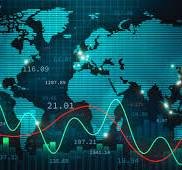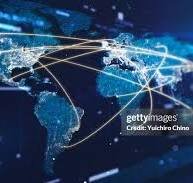In an increasingly interconnected world, international economics and trade form the backbone of global prosperity. From smartphones assembled in Asia to automobiles designed in Europe, international trade drives economic growth, creates jobs, and fosters innovation. Understanding the dynamics of global commerce is essential for policymakers, businesses, and investors alike.
This article explores the principles, trends, and challenges of international economics and trade, highlighting their significance in shaping the modern economy.

📦 What Is International Trade?
International trade refers to the exchange of goods and services across national borders. Countries trade to access resources, technology, and products that may be unavailable or costlier domestically.
Key benefits of international trade include:
- Economic Efficiency: Specialization allows countries to produce goods at lower costs.
- Consumer Choice: Imports increase the variety of products available.
- Economic Growth: Trade boosts industrial development and employment.
- Global Cooperation: Encourages diplomatic and economic relationships between nations.
There are two primary forms of international trade:
- Exports: Goods and services sold to foreign markets.
- Imports: Goods and services purchased from foreign producers.
Balancing exports and imports is crucial for maintaining economic stability and a healthy balance of payments.
💹 Key Principles of International Economics
International economics is governed by several fundamental principles:
- Comparative Advantage:
Countries benefit by producing goods they can create most efficiently and trading for those they cannot. For example, India excels in software services, while Brazil produces coffee efficiently. - Absolute Advantage:
When a country can produce more of a good using the same resources than another country, it has an absolute advantage. - Trade Liberalization:
Reducing tariffs, quotas, and trade barriers encourages free trade, increasing global efficiency. - Exchange Rates & Currency:
Currency values influence competitiveness. A weaker currency can make exports cheaper, boosting trade, while a stronger currency makes imports cheaper for consumers.

🌍 Major Players in Global Trade
Global trade is dominated by countries, multinational corporations, and international organizations:
- United States, China, Germany, and Japan: Leading exporters and importers of goods and services.
- Multinational Corporations (MNCs): Companies like Apple, Samsung, and Toyota manage global supply chains.
- World Trade Organization (WTO): Regulates trade rules, settles disputes, and promotes free trade.
- International Monetary Fund (IMF) & World Bank: Provide financial stability, funding, and development assistance.
Trade agreements, such as NAFTA/USMCA, EU Single Market, and RCEP, further shape the flow of goods, services, and capital worldwide.
💼 International Trade Policies
Government policies greatly influence trade patterns. Key policy instruments include:
- Tariffs: Taxes on imports to protect domestic industries.
- Quotas: Limits on the quantity of goods imported.
- Subsidies: Financial support to domestic industries to improve competitiveness.
- Trade Agreements: Bilateral and multilateral treaties to promote free trade.
Trade policies can promote growth but may also lead to disputes. For example, trade wars occur when countries impose retaliatory tariffs, affecting global supply chains and market stability.
📈 Global Trade Trends
Several trends are shaping modern international economics:
- Digital Trade & E-Commerce: Online platforms enable cross-border sales, reducing traditional barriers.
- Global Supply Chains: Products are often manufactured in multiple countries, increasing interdependence.
- Emerging Markets: Countries like India, Vietnam, and Brazil are becoming key players in global trade.
- Sustainability & Green Trade: Environmental concerns are influencing trade policies, including carbon tariffs and sustainable sourcing.
The COVID-19 pandemic exposed vulnerabilities in global supply chains, highlighting the need for resilience, diversification, and technological integration.
🌐 Challenges in International Trade
Despite its benefits, international trade faces multiple challenges:
- Trade Imbalances: Persistent deficits or surpluses can strain economies.
- Protectionism: Tariffs and restrictions may shield domestic industries but reduce global efficiency.
- Political Conflicts: Sanctions, trade wars, and diplomatic tensions disrupt commerce.
- Logistics & Transportation: Delays, high costs, and port congestion affect supply chains.
- Economic Inequality: Trade benefits may not be evenly distributed, widening gaps between nations and populations.
Addressing these challenges requires international cooperation, fair policies, and innovative economic strategies.

🔮 The Future of International Economics & Trade
The future of global trade is shaped by technology, geopolitics, and sustainability:
- Artificial Intelligence & Automation: Streamlining production, logistics, and predictive analytics.
- Blockchain & Digital Currencies: Enhancing transparency, reducing fraud, and facilitating cross-border payments.
- Green Trade Initiatives: Promoting environmentally friendly products and carbon-neutral supply chains.
- Regional Trade Blocs: Strengthening local markets while maintaining global competitiveness.
Globalization is evolving into a more digital, sustainable, and interconnected system, requiring countries and businesses to adapt quickly.

🕊️ Conclusion
International economics and trade are central to global prosperity. They connect markets, create opportunities, and foster cooperation among nations. By understanding trade principles, policies, and global trends, governments, businesses, and individuals can make informed decisions to thrive in the modern economy.
In an era of rapid technological change, geopolitical shifts, and environmental challenges, the world of international trade will continue to evolve — shaping the future of economies, industries, and societies worldwide.
